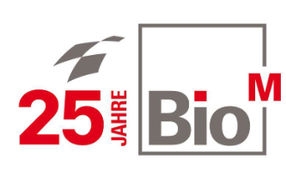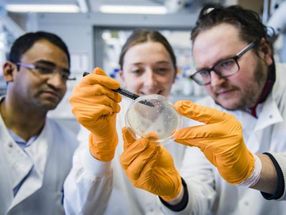Memory in neural circuits
Advertisement
Neuronal reactions to visual sensations are more complex than previously thought. nerve impulses generated in reaction to a visual stimulus create a spatio-temporal pattern that also contains information about a sensation that has occurred immediately beforehand. This very early creation of "memory" has taken experts by surprise, as it requires a revision of established beliefs about the processing of sensory stimuli. Now published in PLoS biology, this study supported by the Austrian Science Fund FWF presents the first experimental evidence that our brain is able to "package" sequences of sensations together in spatio-temporal patterns of nerve stimuli.
An external stimulus - such as a picture - is translated into just one single batch of nerve impulses. This is certainly a plausible theory and, until now, this linear relationship was considered the basic foundation for the analysis of neuronal information processing. More specifically, it was assumed that the neuronal reaction to a sensory stimulus contained information about that stimulus only, and no other. Consequently, in cases where several sensory stimuli occurred one after the other, it was believed that the information was integrated at a higher neuronal level. Doubt has now been cast on this established belief due to work carried out by a group of computer scientists and neuroscientists from Graz University of Technology, Austria and the Max Planck Institute for Brain Research in Frankfurt, Germany.
"We have demonstrated that neuronal reactions to a visual stimulus can also contain information originating from a previous stimulus", explains Prof. Wolfgang Maass, Head of the Institute for Theoretical Computer Science at Graz University of Technology. He continues: "This simple form of memory occurs at a very early stage of information processing in the brain. Until now, it has in fact been assumed that the integration of information from consecutive stimuli occurs only later, i.e. at a higher neuronal level."
The data is the result of an ambitious experimental design, in which parallel live recordings of around 100 nerve cells in the visual cortex of mammals were evaluated directly on a computer. The interdisciplinary team consisting of Dr. Stefan Häusler, Prof. Maass and the Frankfurt-based neurophysiologists Dr. Danko Nikolic and Prof. Wolf Singer was particularly interested in establishing how the information is coded in "spikes", or brief increases in the electrical membrane potential of nerve cells. This was done using new methods of pattern recognition. During the experiment, it was essential to ensure the spikes of numerous nerve fibres were all measured at the same time, as this was the only way the relevant patterns could be uncovered. Precise analysis of the spikes of all 100 nerve fibres revealed that the "memory" was encoded in two different ways - in the number of spikes and in their temporal sequence.
Referring to some of the other surprising results that emerged, Dr. Häusler says: "This data also shows that nerve reactions can last for several hundred milliseconds, even in the very first stage of processing in the brain. When you consider the speed of physiological processes in nerve cells, that s a pretty long time."
Overall, these results provide the first experimental evidence of the new "liquid computing" model for computing processes in the brain that has been developed by Prof. Maass and brain researchers. In contrast to the prevailing theoretical models, this model is based on the assumption that the "biological computer" does not process each and every piece of information separately within a set period of time (as on an assembly line). Instead, it processes them in small packages consisting of pieces of information from a number of time segments that overlap and merge. "Liquid computing" has already found support from many in the technological research sector. It has now been established that various liquids and solids - in which external influences also overlap and have a residual effect - can thus be used for processing information free of any fixed time cycle.
Original publication: D. Nikolic, S. Häusler, W. Singer, W. Maass; "Distributed Fading Memory for Stimulus Properties in the Primary Visual Cortex"; PLoS 2009, Vol. 7, 12.






















































